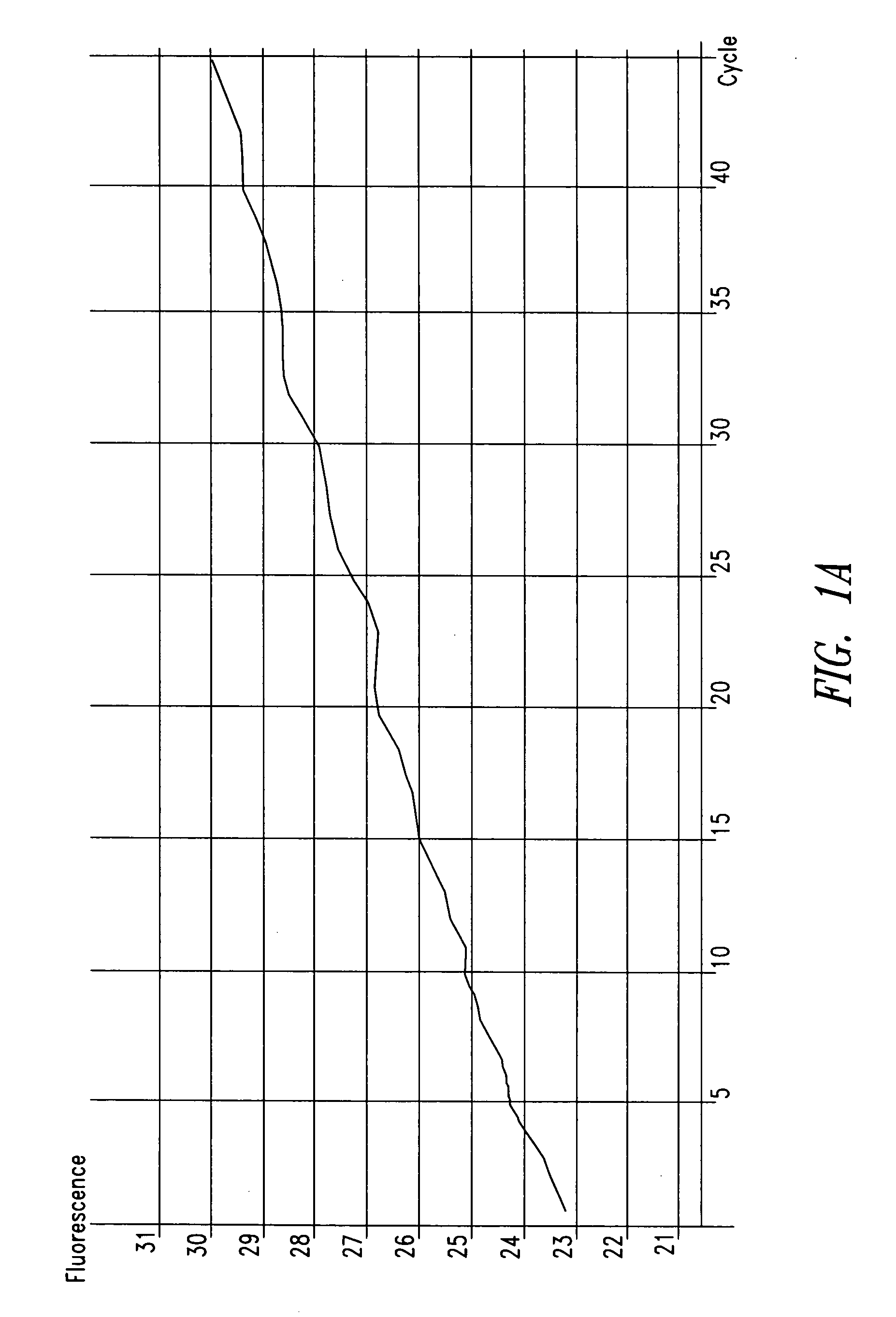Methods and compositions for the detection of Chlamydia trachomatis
a technology of chlamydia trachomatis and compositions, applied in the direction of microbiological testing/measurement, sugar derivatives, biochemistry apparatus and processes, etc., can solve the problems of tubal pregnancy life-threatening, and achieve high stringency conditions, high stringency conditions, and high stringency conditions
- Summary
- Abstract
- Description
- Claims
- Application Information
AI Technical Summary
Benefits of technology
Problems solved by technology
Method used
Image
Examples
example 1
PCR Detection of C. trachomatis Using Primers Specific for ompA
[0087] To demonstrate that detection of genomic sequences is a reliable means of diagnosing C. trachomatis infection of a patient when the cryptic plasmid is not present, samples were obtained from various patients, and DNA was extracted and amplified by PCR using primers specific for ompA or the cryptic plasmid. DNA of 176 patient samples was extracted using the QIAamp DNA Mini Kit (QIAGEN). Primers and probes used for amplification and detection are described in Tables 2 and 3. For amplification and detection, the RealArt™C. trachomatis Plus RG PCR Kit was used on the Rotor-Gene™ 3000 instrument (Corbett Research).
[0088] In one patient sample, C. trachomatis was repeatedly detected using the ompA-specific primers, but it was not detected using primers specific for the cryptic plasmid, as shown in FIG. 1. The cryptic plasmid-based PCR reaction is approximately 10-fold more sensitive compared to the ompA-based assay. T...
example 2
Analytical Sensitivity of Parallel Amplification Detection of C. Trachomatis Using Primers Specific for ompA and the Cryptic Plasmid
[0090] The analytical detection limit, as well as the analytical detection limit in consideration of the purification method (sensitivity limits), of the parallel amplification methods, were assessed. The analytical detection limit in consideration of the purification was determined using C. trachomatis-positive clinical samples in combination with a particular extraction method. In contrast, the analytical detection limit was determined without clinical specimens and independent from the selected extraction methods, using serovars of known concentration.
[0091] To determine the analytical sensitivity, a C. trachomatis serovar dilution series was set up from 0.66 to nominal 0.002 C. trachomatis copy equivalents / μl and analyzed on the LightCycler® 1.1 / 1.2 / 1 instrument via parallel amplification using primers specific for C. trachomatis genomic and crypt...
example 3
Specificity and Robustness of Parallel Amplification Detection of C. trachomatis Using Primers Specific for C. trachomatis ompA and Cryptic Plasmid
[0093] The specificity of the parallel amplification methods was assessed by analyzing 100 different C. trachomatis negative swabs, 30 C. trachomatis negative urine samples, and 30 C. trachomatis negative semen samples using primers specific for C. trachomatis ompA and cryptic plasmid sequences, as provided in Tables 2 and 3. None of these assays generated a positive signal. In addition, C. trachomatis specificity was validated by testing samples positive for other pathogens for cross-reactivity. As shown in Table 5, none of the tested pathogens generated a positive signal. Positive controls generated a signal. These results indicate that the methods of the invention are specific for C. trachomatis, and do not produce false positive results.
TABLE 5C. trachomatis specificity of ompA and cryptic plasmid parallelamplification methodIntern...
PUM
| Property | Measurement | Unit |
|---|---|---|
| Temperature | aaaaa | aaaaa |
| Volume | aaaaa | aaaaa |
| Volume | aaaaa | aaaaa |
Abstract
Description
Claims
Application Information
 Login to View More
Login to View More - R&D
- Intellectual Property
- Life Sciences
- Materials
- Tech Scout
- Unparalleled Data Quality
- Higher Quality Content
- 60% Fewer Hallucinations
Browse by: Latest US Patents, China's latest patents, Technical Efficacy Thesaurus, Application Domain, Technology Topic, Popular Technical Reports.
© 2025 PatSnap. All rights reserved.Legal|Privacy policy|Modern Slavery Act Transparency Statement|Sitemap|About US| Contact US: help@patsnap.com



